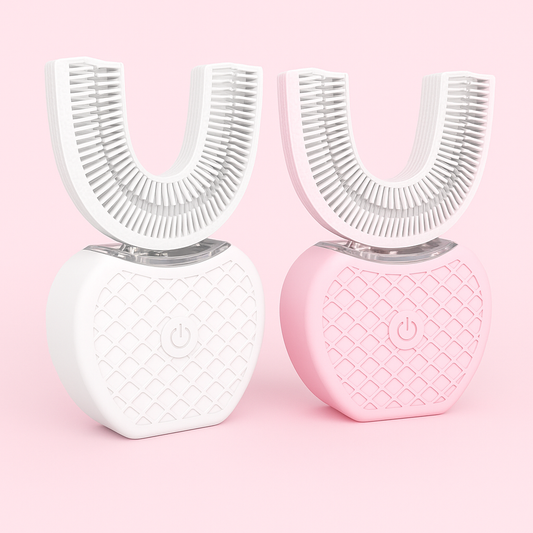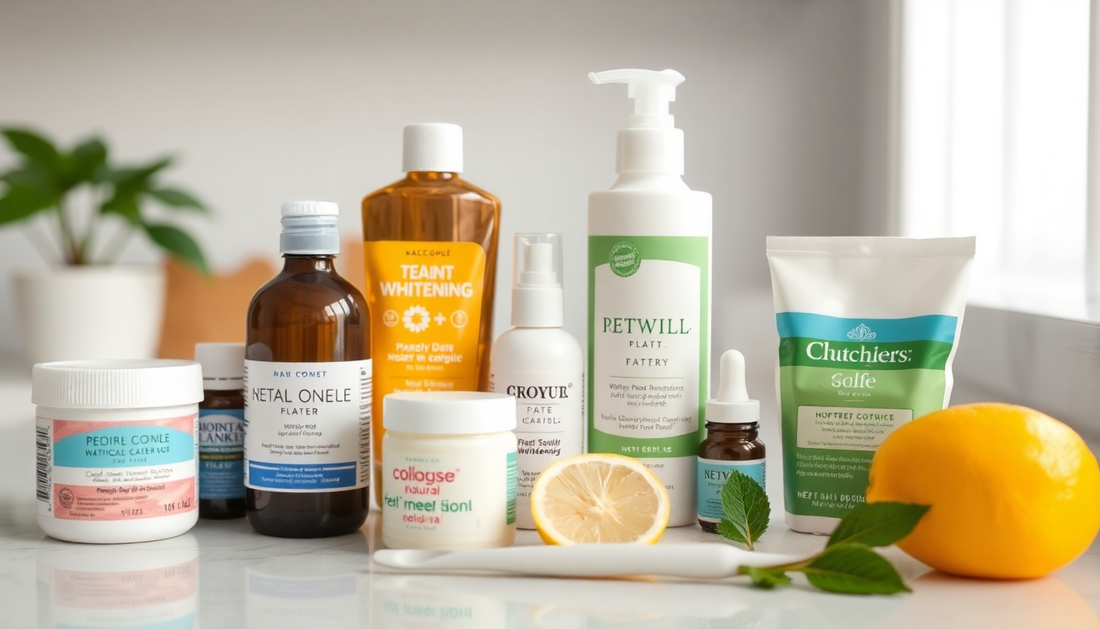Many people want whiter, stronger teeth without fluoride. If that sounds like you, layering a niacinamide toothpaste with xylitol-based products can be an effective, science-informed at-home approach. This long-form guide explains the mechanisms, evidence, step-by-step layering protocols, product-selection strategies, safety considerations, sample routines, troubleshooting, and frequently asked questions to help you design a reliable fluoride-free regimen that aims for whitening and dental health.
Quick overview: What this layering approach does
- Niacinamide toothpaste supports gum health and oral tissue repair while providing a gentle platform for whitening without harsh abrasives.
- Xylitol reduces cariogenic bacteria, neutralizes acids, and helps protect enamel indirectly—especially helpful when you choose a fluoride-free path.
- Layering means using them in a deliberate order and frequency to maximize benefits and minimize sensitivity or ingredient interference.
How niacinamide (vitamin B3) helps teeth and gums
Niacinamide is commonly used in dermatology for anti-inflammatory and barrier-supporting effects. In oral care formulations, niacinamide helps calm irritated gum tissue, supports mucosal health, and may enhance the appearance of the gum margin and surrounding soft tissues. While niacinamide is not a direct bleaching agent, it complements whitening strategies by reducing inflammation and promoting a healthier oral environment where stains are less likely to persist.
What xylitol does for oral health
Xylitol is a five-carbon sugar alcohol that oral bacteria cannot metabolize effectively. Regular, appropriately dosed exposure to xylitol reduces levels of Streptococcus mutans and other acid-producing microbes, which lowers the frequency and severity of acid attacks that erode enamel. Xylitol also stimulates salivary flow, which helps remineralize teeth and wash away staining compounds. For people choosing a fluoride-free regimen, xylitol is a practical alternative to help protect against cavities.
Evidence summary: What studies show
- Clinical trials and systematic reviews consistently show that xylitol, delivered via gum, lozenges, or toothpaste, reduces cariogenic bacteria and cavity risk when used regularly.
- Studies on oral niacinamide are more limited but indicate anti-inflammatory benefits for mucosal tissues and potential support for gum health when formulated in oral care products.
- Neither ingredient is a replacement for fluoride’s enamel-strengthening effects, but both contribute to a healthier oral environment and can be used synergistically.
Why some people choose fluoride-free products
- Personal preference or perceived sensitivity to fluoride.
- Household choices for young children or pets (note: xylitol is toxic to dogs, so keep products away from pets).
- Desire to combine alternative active ingredients like niacinamide, xylitol, or hydroxyapatite.
Important: If you have high caries risk, dry mouth, orthodontic appliances, or multiple restorations, consult your dentist before committing to a fluoride-free course. Fluoride remains the most widely supported agent for direct enamel remineralization.
Principles of safe, effective layering
- Sequence matters: allow time between products so active ingredients can act rather than wash each other away.
- Keep abrasivity low: choose low-RDA (<70) toothpastes to protect enamel when using whitening methods.
- Limit aggressive whitening: avoid stacking peroxide gels, high-abrasive pastes, and manual abrasive scrubs on the same day.
- Monitor sensitivity: pause or modify the routine if you notice heightened sensitivity, irritation, or persistent changes in gum color or texture.
Detailed layering protocols (practical routines)
Choose a protocol based on your daily schedule and sensitivity level. Below are several practical methods ranked from gentle to more proactive.
Method 1 — Gentle and recommended for most people
- After meals, rinse or swish with a xylitol mouth rinse or a 5-10% xylitol solution for 30 seconds. This reduces bacterial acid immediately after eating.
- Spit; wait 30–60 seconds to allow residual xylitol to coat surfaces.
- Brush twice daily for two minutes with a niacinamide-containing toothpaste that is low in abrasivity. Use a soft-bristled brush and gentle circular strokes.
- Use xylitol gum or lozenges between meals for additional protection and salivary stimulation.
Method 2 — Alternate AM/PM focus
- AM: Start with a xylitol rinse or xylitol toothpaste in the morning to reduce overnight bacterial load and freshen breath.
- PM: Brush with niacinamide toothpaste before bed to support gum repair during sleep.
- Add xylitol gum after lunch to reduce afternoon acid and plaque formation.
Method 3 — For people who want visible whitening plus protection
- Limit abrasive whitening pastes to 2–3 times per week; choose a low-abrasive whitening formula.
- On whitening days, perform a xylitol rinse after meals, then wait 30–60 seconds before brushing with niacinamide toothpaste that contains gentle polishing agents.
- Use xylitol gum throughout the day; avoid stacking multiple whitening methods the same day.
Choosing products: what to look for and red flags to avoid
Not all fluoride-free or whitening products are created equal. Here’s how to evaluate them:
- Active ingredients: For fluoride-free protection, look for xylitol, hydroxyapatite, calcium phosphates, or potassium nitrate (for sensitivity) alongside niacinamide if available.
- Abrasivity: Check the Relative Dentin Abrasivity (RDA) value—lower is gentler. Avoid high-RDA pastes if you want to preserve enamel while whitening.
- Whitening mechanism: Mechanical (abrasives) vs chemical (peroxide). For a fluoride-free strategy, prefer gentle mechanical or polishing agents at low frequency and consider professional peroxide-based treatments only as directed by a dentist.
- Label transparency: Brands that list concentrations and provide clinical evidence or references are preferable.
- Reputable sourcing: Choose products from companies with good manufacturing practices and clear customer support.
For consumers looking for ready-made options, try searching for a "good whitening toothpaste" or a "toothpaste without fluoride" from reputable suppliers. If you want a product that includes xylitol, search for "toothpaste with xylitol" to find targeted formulations. For convenience, you can review options at Havana Body—where they offer fluoride-free whitening and xylitol formulations—by checking their range of products such as "good whitening toothpaste" and "toothpaste with xylitol".
How to read labels: ingredients to welcome and to avoid
- Welcome: xylitol, niacinamide, hydroxyapatite, calcium phosphate, low-abrasive silica, enzymes, and pH-balancing agents.
- Avoid or use cautiously: sodium lauryl sulfate (can irritate some mouths), high concentrations of peroxide without dental oversight, and very abrasive silica or calcium carbonate if you plan frequent use.
- Note: "fluoride-free" should be explicit on the label if that is your goal—check active ingredient lists to confirm.
Sample 8-week program for whitening and enamel health (progressive plan)
This progressive plan balances effectiveness and safety. Track your tooth shade and sensitivity weekly.
- Week 1–2: Establish base routine — xylitol rinse after meals; brush morning and night with niacinamide toothpaste; use soft brush.
- Week 3–4: Introduce xylitol gum after snacks; limit staining foods/beverages; increase water rinses after consuming pigmented drinks.
- Week 5–6: If tolerated, add one low-abrasive whitening toothpaste application per week (alternating with niacinamide toothpaste). Continue xylitol throughout day.
- Week 7–8: Maintain routines that produced the best results; consult dentist for professional whitening or fluoride advice if needed for further improvement.
Monitoring progress and objective measures
- Take weekly photos in consistent lighting and with a consistent background for visual comparison.
- Note sensitivity changes on a 0–10 scale before and after introducing any new product.
- Track changes in gum color and bleeding—improvements usually indicate better gum health and reduced inflammation.
Safety notes, special populations, and pets
- Children: For kids under age 2–3, follow pediatric dentistry recommendations. Small children should use a smear of toothpaste and supervision to avoid swallowing.
- Pregnancy/breastfeeding: Although niacinamide is generally safe topically, discuss any regimen changes with your healthcare provider.
- Pets: Xylitol is extremely toxic to dogs—store xylitol-containing products securely and never give xylitol gum or lozenges to pets.
- Dental conditions: If you have many restorations, exposed dentin, dry mouth, or a history of decay, consult your dentist before removing fluoride from your routine.
Common questions (FAQs)
- Will this combo whiten my teeth as well as peroxide? No—niacinamide and xylitol are not oxidizing bleaches like hydrogen peroxide. They support stain reduction through better oral ecology, reduced staining build-up, and gentle polishing. For dramatic bleaching, professional peroxide treatments are more effective but should be supervised.
- Can I use niacinamide and xylitol in the same toothpaste? Some formulations may combine them, but layering (e.g., xylitol rinse then niacinamide brush) often provides more targeted exposure and avoids ingredient dilution.
- How often should I use xylitol? Regular use is best—several times per day is common in studies (e.g., after meals). Use as directed on product labels.
- Is fluoride better than xylitol? They serve different functions: fluoride directly enhances remineralization and enamel strength; xylitol reduces bacterial acid and supports saliva. They can be complementary but if you choose fluoride-free, increase xylitol consistency and dental monitoring.
Troubleshooting common issues
- Increased sensitivity: reduce abrasive products, use a desensitizing toothpaste, and consult your dentist.
- Taste or mucosal irritation with niacinamide: try a lower-concentration product or discontinue if irritation persists.
- No noticeable whitening: reassess staining habits, consider professional cleaning, and continue consistent plaque control and xylitol use for longer-term improvements.
SEO-focused product suggestions and where to shop
If you’re searching online for options, use targeted search phrases like "toothpaste that whitens teeth", "best toothpaste for whiter teeth", "toothpaste whitening best", and "fluoride toothpaste free" to find specialized products. For a curated selection of fluoride-free and xylitol-containing products, browse Havana Body. They offer options optimized for people seeking a "toothpaste without fluoride" and formulations focused on whitening and oral health. For instance, check Havana Body’s selection for a concentrated "toothpaste that whitens teeth" or their range of "best toothpaste for whiter teeth" alternatives.
Summary: Is layering niacinamide toothpaste with xylitol right for you?
Layering niacinamide toothpaste and xylitol-based rinses, gums, or toothpaste can be a smart strategy for people who want a fluoride-free approach to improved tooth appearance and oral health. This routine focuses on reducing bacterial acid, supporting gum health, and minimizing abrasive whitening damage. It is not a replacement for fluoride’s enamel-strengthening effects, so make informed choices based on your personal caries risk and in consultation with your dental provider.
Final invitation
If you’re ready to try a well-formulated fluoride-free routine, explore quality products like a "good whitening toothpaste", "toothpaste with xylitol", and other fluoride-free care items. Visit Havana Body to compare options and find a regimen that aligns with your goals for whiter, stronger teeth. Consider starting with their fluoride-free whitening and xylitol products to build the layering routine described above—shop now at Havana Body to find the best match for your needs.


